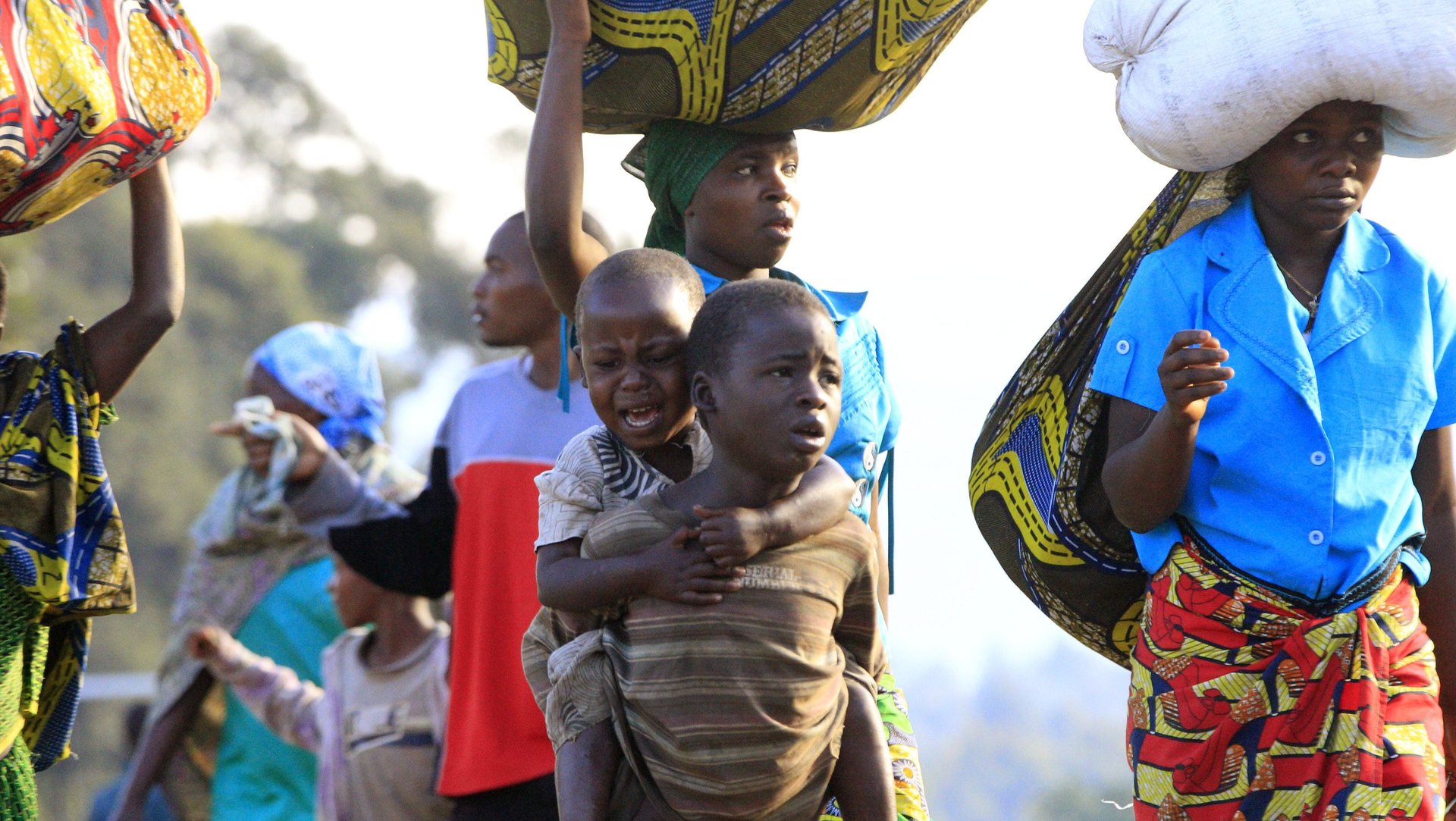More people are being displaced from their homes by environmental change in Africa than we thought
Internal displacement across Africa is almost always attributed to civil strife or full-blown wars.


Internal displacement across Africa is almost always attributed to civil strife or full-blown wars.
But a new report from the Internal Displacement Monitoring Center suggests natural hazards stemming from environmental change forced a record 1.1 million from their homes in 33 African countries in 2015. Floods were the key displacing factor, destroying thousands of buildings and homes, damaging roads and bridges, upsetting food and irrigation systems, and disrupting education and health services. The environmental displacement was acute across the entire continent, affecting those in Zimbabwe, Ethiopia, Malawi and Nigeria, and displacing more than 14 million people between 2009 and 2015.
The report, the first to collect and present comprehensive data from Africa, also painted a damning picture of internal displacement. Coupled with those fleeing conflict and violence, Africa had a total of 12.4 million people who were living in ongoing displacement in 21 African countries. The figure stood for an average of 9,500 people who were uprooted from their homes on a daily basis. The number of IDPs was also more than double the continent’s 5.4 million refugee population.
“Africa is in the throes of an internal displacement crisis,” the report, launched with the support of the African Union in Addis Ababa said.
Fresh conflicts in Sudan and South Sudan, besides the ongoing insurgency in northeast Nigeria with Boko Haram accounted for large displacement too. Globally, violence as a cause for flight in the continent was only second to those raging in the Middle East. More than 736,000 people fled conflicts in Nigeria; 100,000 in Libya; 210,000 in CAR; 90,000 in Somalia: all signifying a critical challenge for national government and humanitarian agencies.
Development and business projects also uprooted millions of people from their homes. In conjunction with private entities, governments have in some cases forced people off their lands, sometimes with no commitment to safeguard residents from the adverse consequences that come with relocation. These evictions have taken place in countries like Nigeria and have also sparked protests in countries like Ethiopia. Those evicted also faced worsening health situations, restricted mobility and the loss of their social support networks.
All these situations happened despite the ratification of the Kampala Convention, the signature African law adopted in 2009 and signed by 40 countries, so as to protect and assist internally displaced persons. The IDMC report also noted that lack of data and knowledge limits many African countries from analyzing trends and identifying effective policy options to tackle displacement and its key factors.
“Monitoring internal displacement has improved in recent decades, but there are still too many gaps in our knowledge,” Maya Sahli Fadel, the AU special rapporteur on refugees, asylum seekers, migrants, and IDPs, said. “For two of the key drivers of displacement in Africa, drought, and development projects, we lack even the most basic information.”